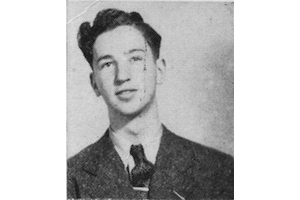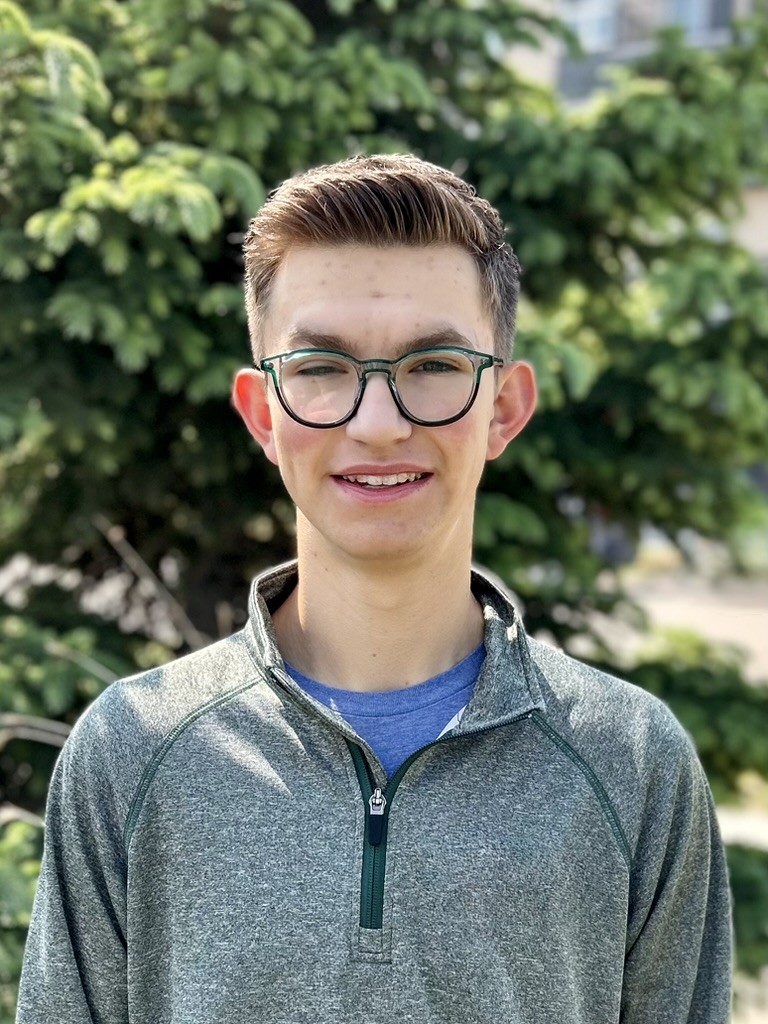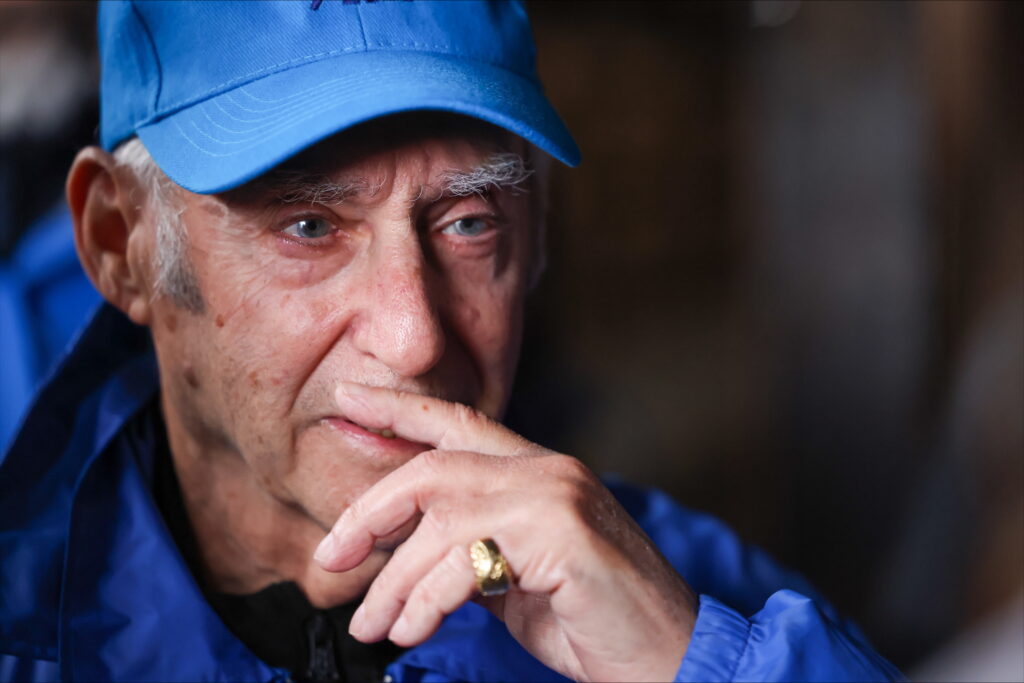Local News
Simkin Centre receives $725,000 gift from mysterious donor

By BERNIE BELLAN
(Posted Oct. 29, updated Oct. 30, Oct.31)
On Oct. 21 we received an email from the Simkin Centre informing us that the centre had received a gift of $725,000 from someone about whom they know almost nothing.
This story has now been amended to reflect crucial information that we have obtained about the individual who was responsible for that sizeable donation. If you want to skip to that new information scroll down to the end of this article. If you want to read how the story unfolded – keep reading.
Here is what the email received on Oct. 21 said:
“The Saul and Claribel Simkin Centre PCH Inc. Board of Directors and The Saul and Claribel Simkin Centre Foundation Board of Directors are pleased to share with you the announcement of an unexpected bequest to the Sharon Home in the amount of $725,937 CDN from the Estate of Myer and Corrine Geller of San Diego, California.
“These funds come to the Centre at an opportune time as we are faced with aging infrastructure and equipment, rising costs with freezes or cuts to government funding and ongoing covid related costs that remain unfunded at this time. A portion of these funds (30%) will be used for the immediate needs of the Centre, including support of our fight against Covid-19. The remainder (70%) of the funds will be allocated to the Jewish Foundation of Manitoba to create our new Building Reserve Fund. This fund will help to ensure our ability to maintain our building and equipment on a long term basis. The Simkin Centre is a world class facility and we want to do our best to keep it that way.
“All we know about the Gellers is they had no children and Myer was a 1943 graduate of St. John’s High School (Winnipeg). Further, Mr. Geller went to MIT, became a physicist and was granted several patents.
“We have been unable to determine why we were the recipient of this bequest. We hope sharing this good news with the community may give us some insight into the mystery. We hope that the Gellers’ generosity will inspire others to consider the Simkin Centre in their estate planning.”
Upon receipt of this tantalizing news, we began to investigate who Myer and Corrine Geller were and the possible reason that they had decided to leave such a substantial amount of money to the Sharon Home.
Beyond the information that was divulged in the Simkin Centre press release we were able to determine some further information about the Gellers. We were aided in this process by Don Aronovitch, who is Chair of the Simkin Foundation, and by Don Harrison, publisher and editor of the San Diego Jewish World.
Myer Geller was born in Winnipeg in 1926. Although we are not certain who his parents were, a search of various websites, including Ancestry.ca, has led us to believe that his father’s name was Max Geller. There were several Max Gellers who lived in Winnipeg in the early part of the 20th century. Unfortunately, none of the archival material that we searched led to a definite conclusion who Myer Geller’s parents were. We also contacted Rena Boroditsky of the Chesed shel Emes to see whether the Chesed’s records give the names of next of kin of deceased, but they don’t. We also spoke with Shelly Sklover, funeral director of Etz Chayim Congregation, to see whether their records give the names of next of kin of deceased. (Of the many Gellers who are buried in Winnipeg cemeteries, 49 out of 51 are buried in cemeteries now under Etz Chayim’s management.) Unfortunately that information is also not contained within the Etz Chayim’s records.
We also searched the archives of our own newspaper and were only able to find one reference to Myer Geller – that he had a bar mitzvah in 1939. A search of the Jewish Heritage Centre’s archives also led nowhere, but unfortunately their archives do not give very precise results.
An email from Don Aronovitch, however, shed some more light as to when the Simkin Centre first became aware that a substantial donation was about to come their way:
“In early October 2019, Laurie (Cerqueti, CEO of the Simkin Centre) was notified we were the 11% Beneficiary of the Myer & Corinne Geller estate in San Diego. While fabulous news, it was so much ‘out of the blue, that we wondered if it was legitimate. We were sent a copy of the Will and gradually, the prospect of this bequest being real came into focus. After a long quiet period, as the estate was being settled, a cheque for $550,000 USD arrived in August payable to the Saul & Claribel Simkin Centre Foundation. After the standard waiting period to see if the cheque cleared the banking system, our bank gave us a ‘thumb’s up’ and it became the focus of the Simkin Centre’s planning process.
“Our efforts to determine ‘who these people were’ & ‘why us’ drew a blank. We determined that Myer graduated from St. John’s High School the same year as Gordon Pullan and that Buddy Brownstone was editor of St. John’s Newsletter. However, neither Gordon nor Buddy had recollection of a Myer Geller. Similarly, we were unable to determine Corinne Geller’s maiden name.”
In addition to the information contained in the Simkin Centre email that Myer Geller graduated from St John’s Tech in 1943, we were able to learn that he moved to the United States in 1949, became an American citizen in 1950, and attended MIT from 1951-55. A search of University of Manitoba records did not disclose that Mr. Geller ever attended that university, so it’s a mystery where else he might have gone to school following his graduation from St. John’s.
Myer Geller married Corrine Taper (although her name is spelled Corrin on their marriage record) in 1954 in New York state. At various times the Gellers lived in New York, Pennsylvania, and California.
The Gellers moved to San Diego in 1988, which is where they lived until their deaths – Myer Geller in 2018 and Corrine Geller in 2019.We managed to locate a close friend of the Gellers, someone by the name of Mikahil Melsitov. Mr. Melsitov did not know whether Myer Geller had any living relatives, although he did think that he had a brother. We attempted to contact anyone by the name Geller in Winnipeg to learn whether any of them knew Myer Geller, but our efforts proved fruitless.
During the course of our conversation with Mikhail Melsitov, he also disclosed that his wife, Oxana, was a trustee of the Geller Trust, which donated the $725,000 Cdn. to the Sharon Home. Although Mr. Melsitov was quite friendly during our 20-minute conversation and was willing to give us his wife’s cell number, all attempts to contact her proved futile. Further attempts to contact Mr. Melsitov also led nowhere. (Why did both Melsitovs refuse to respond to our repeated attempts to contact them, we wonder, especially when Mr. Melsitov had been so friendly during our only phone call?) Something that Mr. Melsitov did say that aroused our interest though was that representatives of the Geller Trust had difficulty making contact with the Simkin Centre in August 2019, following Mrs. Geller’s death. Presumably that was because they were trying to contact the Sharon Home. After all, Myer Geller had left Winnipeg 70 years earlier and would he even have been aware that the Sharon Home was now the Simkin Centre?
We also attempted to contact various lawyers who were associated with Myer Geller, none of whom responded to our phone messages or emails. We did discover that the Geller home was sold by their estate for $1.25 million in April of this year. The home was not overly large – only two bedrooms and two bathrooms. (By the way, the taxes were only $2,700 on their home. That gives you an idea how high our city taxes are in Winnipeg compared to other cities – as if you needed to be reminded.)
But if the donation to the Simkin Centre constituted only 11% of the total amount left to all beneficiaries of the Geller Trust, the Geller Trust would have been worth close to $7 million Canadian.
How did Myer Geller amass such a large fortune?
From what we were able to determine he was an inventor of extraordinary ability. Myer Geller’s name is associated with 15 different patents. For at least a certain period of his life he worked for a branch of the US Navy called the Naval Operations Support Centre. We attempted to contact a representative of the NOSC to find out if there was anything we could be told about Mr. Geller, but were unsuccessful.
So, the question that tantalizes is: Why would someone who had left Winnipeg 70 years ago want to leave such a substantial donation to the Jewish nursing home (which is now referred to as a personal care home)?
We asked Don Aronovitch whether the Simkin Centre had searched its records to try to find the name of someone who might have been a relative of Myer Geller?
Don responded: “None that we could find. We had very few leads and they all led to a dead end.”
We commented to Don: “It just seems so strange that 70 years after having left Winnipeg he leaves so much money to the Winnipeg Jewish nursing home – and nobody knows anything about him.”
Don Aronovitch agreed: “Very strange but there is a story there. We just do not yet know what it is.”
If anyone reading this is able to shed some light on Myer Geller please contact this newspaper. We’d love to be able to report at some future date that we solved this mystery.
Post script: Since this story first appeared in the Oct. 28 issue of The Jewish Post & News we have received some very intresting responses from a number of different readers.
One reader said they actually had a copy of the 1943 St. John’s yearbook with Myer Geller’s picture in it. We’re reproduced that photo on this site. The caption accompanying the photo says: “Myer Geller – A good man to have around when scholastics come to the fore, Myer is the fellow who has made the Reserve Army what it is today.”
Then we received an email from another reader who has been fascinated by the story and who contacted a friend who is an ardent genealogist. Their friend did some further digging beyond what I had come up with and sent the following information: “Myer died on 12/30/16. He and Corinne, who was born 2/12/26, bought their house at 1622 Plum St. in San Diego in 1993. He got his degree from MIT in 1955 and in 1960 or 1961 moved from a job at Hughes Products to be a senior scientist at the Solid State Division of Electro-Optical Systems in Pasadena, CA. He was a registered Democrat.”
Updated Oct. 30: Reader Ed Feuer came up with even further information about Myer Geller. In a post to our Facebook page Ed wrote that he had found a reference to Myer Geller in the July 5 archives of the Winnipeg Free Press, in a notice headed “City man receives Massachussetts degree” The body of the notice says: “Myer Geller, son of Mr. and Mrs. M. Geller, 284 Bannerman Avenue, has received his doctor of physics degree from the Massachussetts Institute of Technology, Boston. Mr. Geller attended St John’s technical high school and the University of Manitoba. He received his master’s degree in physics at the University of Minnesota.”
There are only two Gellers in Winnipeg whose first names begin with M who could have been Myer Geller’s father – and both had the first name Max. One Max Geller died in 1956, and one in 1966. Unfortunately neither one appears in the Free Press obituary archives. But – we’ve determined that the Max Geller who died in 1956 was married to Dora, who did live in the Sharon Home. But Dora’s obituary makes no reference to a Myer Geller.
The other Max Geller died in 1966. His wife’s name was Sarah (née Feldman). We haven’t been able to find an obituary for either one. The question is: Did either Max or Sarah Geller live in the Sharon Home prior to their death?
Update Oct. 31: We received further information from reader Ed Feuer, who found Max Geller’s obituary notice in the Winnipeg Tribune archives.
Ed confirmed that Myer Geller’s parents were Max and Sarah Geller. He also disclosed that Myer Geller had two sisters: Frances – who was married to an Edward Jordan in Toronto; and Rose – who was married to Louis Lieberman, also of Toronto.
We will attempt to obtain any information about either sister. But, if anyone reading this does have some information that woud be useful, please contact me at jewishp@mymts.net or call me at 1-204-694-3332.
Local News
Further to the Simkin Centre’s financial situation

By BERNIE BELLAN A while back I published an article about the deficit situation at the Simkin Centre. (You can read it at “Simkin Centre deficit situation.“) I was prompted to write that particular article after reading a piece written by Free Press Faith writer John Longhurst in the August 5 issue of the Free Press about the dire situation personal care homes in Winnipeg are in when it comes to trying to provide their residents with decent food.
Yet, Longhurst made one very serious mistake in his article when he wrote that the “provincial government, through the Winnipeg Regional Health Authority, has not increased the amount of funding it provides for care-home residents in Manitoba since 2009.”
In fact, the WRHA has given annual increases to personal care homes, but its allocations are not broken down by categories, such as food or salaries. As a spokesperson for the WRHA explained to me in an email: “PCHs receive per diem global operating funding based on the number of licensed beds they operate. This funding model is designed to support the full range of operating costs associated with resident care, including staffing, food services, utilities, building operations, and other day-to-day expenses.”
Now, one can make a perfectly valid argument that the level of funding from the WRHA has not kept up with inflation, especially inflation in food costs, but the Simkin Centre is in an even more precarious position because of the skyrocketing cost of kosher food.
“In recent years,” according to an article on the internet, “the cost of kosher food has increased significantly, often outpacing general food inflation due to unique supply chain pressures and specialized production requirements.”
Yet, when I asked Laurie Cerqueti how much maintaining a kosher facility has cost the Simkin Centre, as I noted in my previous article about the deficit situation at Simkin, she responded: “approximately $300,000 of our deficit was due to food services. I do not have a specific number as far as how much of the deficit is a result of kosher food…So really this is not a kosher food issue as much is it is an inflation and funding issue.”
One reader, however, after having read my article about the deficit situation at Simkin, had this to say: “In John Longhurst’s article on Aug 5, 2025 in the Free Press, Laurie (Cerqueti) was quoted as saying that the annual kosher meal costs at Simkin were $6070 per resident. At Bethania nursing home in 2023, the non-kosher meal costs in 2023 were quoted as $4056 per resident per year. Even allowing for a 15% increase for inflation over 2 years, the non-kosher food costs there would be $4664.40 or 24% lower than Simkin’s annual current kosher food costs. If Simkin served non-kosher food to 150 of its 200 residents and kosher food to half of its Jewish residents who wish to keep kosher, by my calculation it would save approximately $200,000/year. If all of Simkin’s Jewish residents wished to keep kosher, the annual savings would be slightly less at $141,000.”
But – let’s be honest: Even though many Jewish nursing homes in the US have adopted exactly that model of food service – where kosher food is available to those residents who would want it, otherwise the food served would be nonkosher, it appears that keeping Simkin kosher – even though 45% of its residents aren’t even Jewish – is a “sacred cow” (pun intended.)
So, if Simkin must remain kosher – even though maintaining it as a kosher facility is only adding to its accumulated deficit situation – which currently stands at $779,426 as of March 31, 2025,I wondered whether there were some other ways Simkin could address its deficit while still remaining kosher.
In response to my asking her how Simkin proposes to deal with its deficit situation, Laurie Cerqueti wrote: “There are other homes in worse financial position than us. There are 2 homes I am aware of that are in the process of handing over the keys to the WRHA as they are no longer financially sustainable.”
I wondered though, whether the Simkin Centre Foundation, which is managed by the Jewish Foundation of Manitoba might not be able to help the Simkin Centre reduce its deficit. According to the Jewish Foundation’s 2024 annual report, The Saul and Claribel Simkin Centre Foundation, which is managed by the Jewish Foundation, had a total value of $11,017,635.
The Jewish Foundation did distribute $565,078 to the Simkin Centre in 2024, but even so, I wondered whether it might be able to distribute more.
According to John Diamond, CEO of the Jewish Foundation, however, the bylaws of the Foundation dictate that no more than 5% of the value of a particular fund be distributed in any one year. There is one distinguishing characteristic about the Saul and Claribel Simkin Centre Foundation, in that a portion of their fund is “encroachable.” The encroachable capital is not owned by JFM. It is held in trust by JFM but is beneficially owned by Simkin, similar to a “bank deposit”. While held by the JFM, these funds are included in the calculation of Simkin’s annual distribution.
I asked John Diamond whether any consideration had been given to increasing the distribution that the Jewish Foundation could make to the Simkin Centre above the 5% limit that would normally apply to a particular fund under the Foundation’s management.
Here is what John wrote in response: “The Simkin does have an encroachable fund. That means that at their request, they can encroach on the capital of that fund only (with restrictions). This encroachment is not an increased distribution; rather, it represents a return of capital that also negatively affects the endowment’s future distributions.
”It is strongly recommended that encroachable funds not be used for operating expenses. If you encroach and spend the capital, the organization will receive fewer distribution dollars in the next year and every year as the capital base erodes. Therefore, the intent of encroachable funds is for capital projects, not recurring expenses.”
I asked Laurie Cerqueti whether there might be some consideration given to asking for an “encroachment” into the capital within the Saul and Claribel Simkin Centre Foundation?
She responded: “We are not in a position where we are needing to dip into the encroachable part of our endowment fund. Both of our Boards (the Simkin Centre board and the Saul and Claribel Simkin Centre Foundation board) are aware of our financial situation and we are all working together to move forward in a sustainable way.”
At the same time though, I wondered where donations to the Simkin Centre end up? Do they all end up in the Simkin Centre Foundation, for instance, I asked Laurie Cerqueti on December 15.
Her response back then was: “All donations go through our Foundation.”
I was somewhat surprised to read that answer, so I asked a follow-up question for clarification: “Do all donations made to the Simkin Centre end up in the Simkin Centre Foundation at the Jewish Foundation?”
The response this time was: “No they do not.”
So, I asked: “So, how do you decide which donations end up at the Foundation? Is there a formula?”
Laurie’s response was: “We have a mechanism in place for this and it is an internal matter.”
Finally, I asked how then, the Simkin Centre was financing its accumulated deficit? Was it through a “line of credit with a bank?” I wondered.
To date, I have yet to receive a response to that question. I admit that I am puzzled that a personal care home which has a sizeable foundation supporting it would not want to dip into the capital of that foundation when it is facing a financial predicament. Yes, I can see wanting the value of the foundation to grow – but that’s for the future. I don’t know whether I’d call a $779,425 deficit a crisis; that’s for others to determine, but it seems pretty serious to me.
One area that I didn’t even touch upon in this article, though – and it’s something I’ve written about time and time again, is the quality of the food at the Simkin Centre.
To end this, I’ll refer to a quote Laurie Cerqueti gave to John Longhurst when he wrote his article about the problems personal care homes in Winnipeg are facing: “When it comes to her food budget, ‘we can’t keep making the same number of bricks with less straw.’ “
Local News
Exclusive: Security Enhancement Fund to be announced by Province in coming days

By NOAH STRAUSS The province is set to announce a new program called the Security Enhancement Fund, which
will provide funding to religious and faith groups to improve security at institutions such as
synagogues and mosques. In an exclusive interview, Minister of Justice Matt Wiebe outlined the
plan and detailed what the province has already done to help protect Jewish Manitobans.
“What we want to do is to be able to provide the community with the kind of tools that they need
to stay safe and to ensure that everyone in the community feels safe,” said Wiebe.
The fund will provide a missing link between government and religious communities, and
communities will now be able to make their own choices without money being a big restraint.
Essentially, the power will be in the hands of community leaders and not government officials.
The minister noted that the new partnerships will provide the province a better understanding of
the needs of every community. Rather than the province making the choices, they are
essentially giving a voice to each community. The grants, totalling $1 million, will provide funds to enhance security at facilities like synagogues.
The Jewish Post reached out to Dr. Rena Secter Elbaze, executive director of Congregation
Shaarey Zedek. “It’s important that the government show us that they’re taking security seriously and stepping up to the plate to make this offer. We will absolutely be applying for grant money,” she said. Elbaze also wants to know whether or not the government will cover the costs of things the synagogue has already spent money on. She noted that the province has, in the past, made grants available to have security guards present.
When speaking about what the Justice Ministry has already done to protect Jewish Manitobans,
Wiebe brought up the new special prosecutor that is focusing on hate crimes. Wiebe said the
special prosecutor works closely with the Winnipeg Police Service “to support investigations and
prosecute hate crimes. Wiebe also went on to say how the Department of Education has been helping to fight antisemitism. “The creation of the Holocaust education curriculum is an important step in the right direction,” he said. When asked about Oliver Didtger Ederhof, the individual charged with 14 counts of mischief including vandalism of Shaarey Zedek, Wiebe said decisions like bail and police undertakings are decisions that are in part made by the federal government through the criminal code and policies. “We’re going to continue to advocate for stricter bail reform at the federal level…. I’ve been very clear, we issued clarified directives around bail to our Crown prosecutors.”
The full announcement from the province is expected in the coming days.
Local News
March of the Living 2023 participants form Taste of Hope project to help honour the memory of Holocaust survivor Alex Buckman

By BERNIE BELLAN The March of the Living is an annual two-week international educational program that brings thousands of students and adults to Poland and Israel to study the Holocaust, Jewish history, and the rise of the State of Israel. Founded in 1988, it features a 3-kilometer silent walk from Auschwitz to Birkenau on Yom HaShoah (Holocaust Remembrance Day).
Attendees on the march are accompanied by adults, some of whom themselves have been Holocaust survivors.
Following the week in Poland, participants travel to Israel to observe Yom HaZikaron (Israel’s Memorial Day) and celebrate Yom HaAtzmaut (Israel’s Independence Day), marking a journey from darkness to life.
For many years the coordinator of the march in Winnipeg was Roberta Malam, working on behalf of the Jewish Federation of Winnipeg. More recently Abby Flackman filled that role, and now the person in charge is Lindsey Kerr.
Since its inception 37 years ago the March of the Living has become a rite of passage for many young Winnipeg Jews who have been able to participate as an organized group from Winnipeg and combine visits to the death camp at Auschwitz-Birkenau in Poland with the subsequent trip to Israel.
Then – the Covid pandemic hit – in 2020, and the March of the Living was put on hold for two years – in 2020 and 2021.
In 2022, the March of the Living resumed, but there was no organized contingent from Winnipeg participating. (There may have been some Winnipeggers who did go on the march that year, but if there were any they would have been part of a general Canadian group since there was no Winnipeg coordinator that year.)
In 2023, however, once again a very large contingent of young Canadian Jews – 51 altogether, of whom approximately two-thirds were from Winnipeg, went on that year’s March of the Living. That particular march was memorable for many reasons, including the fact it was the last full march since 2019 and was to remain the last march to have an organized Winnipeg contingent in the past six years as the years 2024 and 2025 were interrupted by the war in Gaza. (There were smaller marches held in 2024 and 2025, but again there was no organized contingent from Winnipeg.)
Recently, we were contacted by one of the participants of that 2023 march, Ethan Levene, who asked us whether we’d be interested in running what turned out be a very poignant story about one particular aspect of that 2023 March of the Living.
Here is what Ethan wrote:
“In April 2023, the Coast to Coast Canadian delegation of March of the Living was privileged to travel with Holocaust survivor Alex Buckman (z”l). March of the Living is a Holocaust education trip that allows participants to visit and bear witness to the sites of the Holocaust. Unfortunately, while sharing his story in Poland, Alex passed away. However, the impact he left on us students was immeasurable.

“While speaking to us in Warsaw, Alex told us the story of his Aunt Becky’s gâteau à l’orange (orange cake). While in Ravensbruck concentration camp, his aunt managed to write down this recipe. After his parents’ murder, his Aunt Becky went on to raise Alex after surviving. In addition to sharing his story, Alex tasked us with baking the cake with family and friends.
“Out of this, a group of alumni from our trip have created this project: ‘A Taste of Hope.’ On February 1st, university students from over 5 universities across Canada will come together to bake the gâteau à l’orange and hear Alex’s story. Proceeds from the event and this fundraising page will support the World Federation of Jewish Holocaust Survivors and Descendants. Alex was heavily involved with this organization, whose mission is to both create community for Holocaust survivors and their descendants and educate about the Holocaust to help fight against antisemitism and all forms of bigotry and hate.
“Here is information from our fundraising page for the event – ‘A Taste of Hope’: Fundraising for A Taste of Hope.
Ethan added that “it’s completely student led, all by alumni from our 2023 trip attending university at these various locations across Canada; Winnipeg, London, Kingston, Montreal.”
He also added: “Follow us on instagram@tastehope.“
Here is a link to a CBC story about Alex Buckman: Alex Buckman story
In a subsequent email Ethan gave the names of Winnipeggers who are involved in A Taste of Hope: Ethan Levene (studies at McGill), Zahra Slutchuk, Alex Stoller (studies at Queens), Coby Samphir, Izzy Silver (studies at Waterloo).
He also added names of others who are involved in the project: Jessie Ages, Anneke Goodwin, Lilah Silver, Ella Pertman, Ellie Vogel, and Talia Cherun.
To find out more about March of the Living in Winnipeg go to: March of the Living


